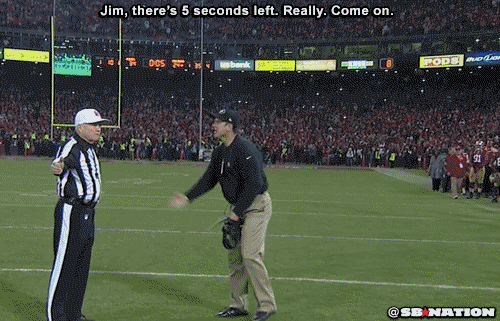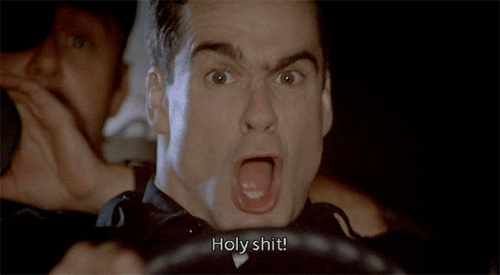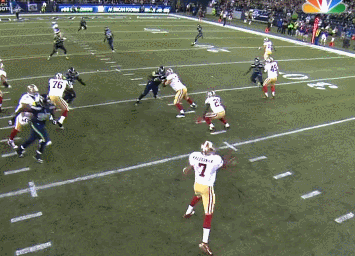patrick.net
An Antidote to Corporate Media
1,190,143 comments by 13,851 users - AmericanKulak, Blue, UkraineIsTotallyFucked online now

The bill for house-equity lines is coming due
2014 Mar 26, 2:40am 12,697 views 63 comments
« First « Previous Comments 43 - 63 of 63 Search these comments
http://www.ft.com/intl/cms/s/0/c90afe4c-afc4-11e3-9cd1-00144feab7de.html#axzz2xHe2M8MJ
US banks face Heloc high water
By Camilla Hall
Some HELOC borrowers face risk of losing their homes
A looming repayment wave for a form of loan many Americans took out against their homes before the financial crisis is attracting the attention of regulators, who fear US banks face Heloc high water
Banks will want to get paid.
ChapulinColorado - 2% is lower than 10-year Treasury and AAPL? Buy these two asset class?
Kyle Bass said, (currently,...) "I'm not just looking for a return on capital, but a return of capital."
That makes a lot of sense to me.

http://www.realtor.org/news-releases/2014/03/february-existing-home-sales-remain-subdued
February Existing-Home Sales Remain Subdued
WASHINGTON (March 20, 2014) – Home prices continued to show solid growth in most of the country due to limited inventory conditions, but rising prices and severe winter weather caused existing-home sales to slip in February, according to the "hot air" National Association of Realtors®.
NAR President Steve Brown, notes the survey results are for recent homebuyers. “It’s clear there are other people who would like to buy a home that are not in the market because of debt issues, so we can expect a lingering impact of delayed home buying,†Brown added.
The above, and many other factors are going to be what makes buying in the current market a fool's game. This is a time to sell.
Regulators are worried that this will throw the neediest borrowers into default. And banks are concerned about what this means for their bottom line.
Banks will be bailed out one way or another by taxpayers.
Regulators are worried that this will throw the neediest borrowers into default. And banks are concerned about what this means for their bottom line.
Banks will be bailed out one way or another by taxpayers.
I'm afraid you are right. Why do we allow this theviery? How do we stop it?
It is always amazing to see folks deny reality when they believe they will make money. The current equities ramp is a perfect example. Will the music stop soon, or do we need outrageous abuses to again bring the whole shit bomb down?
http://dsnews.com/housing-market-reached-bubble-status/
Video
https://www.youtube.com/watch?v=BaUwSxf57Xc
Has the Housing Market Reached Bubble Status Again?
Author: Tory Barringer March 31, 2014
Has the Housing Market Reached Bubble Status Again?
With year-over-year price increases continuing on a double-digit course despite recent slowdowns, the ever-present question has once again come to the fore for market commentators and analysts: Has the housing market reached bubble status once again?
The answer—at least, according to Trulia chief economist Jed Kolko—is both yes and no.
In the company’s latest quarterly Bubble Watch report, Kolko estimates national home prices are still around 5 percent undervalued when examining long-term fundamentals like historical prices, incomes, and rents. While ongoing improvements in prices have brought the market close to a tipping point, he notes that it’s far cry from the 39 percent overvaluation in the first quarter of 2006.
“Even though recent double-digit price gains look unsustainable, current national price levels are not cause for alarm,†Kolko said in a blog post. “Sharp price gains, like we’ve had in 2012 and 2013, are not the sign of a bubble unless price levels look high relative to fundamentals.â€
Furthermore, “the slowdown in price gains make[s] it less likely that we’re heading for another bubble,†he added.
While the national market is still undervalued, conditions vary widely at the local level. According to Trulia, out of the 100 largest metro markets, home prices are overvalued in 19, including eight of the 11 largest California metros. The greatest danger is along the state’s southern coast, in markets like Orange County, Los Angeles, and Riverside-San Bernardino—which make up three of the five most overvalued markets in the country. (The two remaining slots go to Honolulu and Austin.)
While the number of overvalued housing markets is on the rise, Kolko again says historical perspective is needed: “In 2014 Q1, prices were overvalued in 19 of the 100 largest metros, which is the highest number since 2009 Q4; furthermore, prices were overvalued by more than 10 percent in 4 large metros, which is the highest number since 2008 Q4.
However, at the height of the bubble, all 100 were overvalued, and 91 were overvalued by more than 10 percent.â€
http://www.realtytrac.com/content/news-and-opinion/is-american-real-estate-out-of-the-woods-8022
Is American Real Estate Out Of The Woods?
March 28, 2014
By Peter Miller, Contributor
For some time virtually all markers have pointed to an improving US real estate picture and yet there remains an undercurrent of unease. So are we out of the financial woods?
“The only factors holding us back from a stronger recovery are the ongoing issues of restrictive mortgage credit and constrained inventory,†according to Steve Brown, president of the National Association of Realtors. “With strict new mortgage rules in place, we will be monitoring the lending environment to ensure that financially qualified buyers can access the credit they need to purchase a home.â€
The idea that real estate sales are somehow constricted and delayed by evil financial regulations and fussy lenders just doesn't compute. According to a survey of some two million 2013 real estate closings, EllieMae found:
"The average closed loan FICO score fell to 727 in December 2013, down 21 points from December 2012." A "closed" loan is not a mortgage application, it's a loan where the lender said yes to the borrower and provided funds for settlement.
It took 43 days to close a loan in December 2013 versus 48 days a year earlier.
The average debt-to-income ratio (DTI) went from 23/34 in January 2013 to 25/39 in December 2013, meaning that it has become far easier to get a loan because lenders are allowing bigger allowances for housing costs and debts.
The numbers show that access to credit has become objectively easier and not harder. That said, there's a problem with the financing system but it's not rules designed to make the financial system less risky.
What’s the problem?
Income.
Home values can only increase when borrowers can afford larger mortgages. Bigger mortgages are possible when mortgage standards are eased, mortgage rates fall or incomes rise. A look at recent data shows this is a case where two-out-of-three just isn't good enough.
First, we know that mortgage standards today are more liberal than just a year ago — note the EllieMae finding that credit scores for closed loans dropped 21 percent in 2013.
Second, we also know that mortgage rates are down from the rates generally seen during the past four decades. Standard & Poors says mortgage rates during the last 40 years averaged 8.6 percent while interest levels at this writing are around 4.23 percent for 30-year, fixed-rate mortgages, literally half the rates typically seen by our parents and grandparents. With these rates borrower should be lined up at lender offices.
Third, income has stalled. The problem with the housing market isn’t the housing market; it is instead a profound economic dislocation.
The Brookings Institution reports that “more than one in six men between 25 and 54 years old — the prime working years — aren’t working. That’s 10.4 million men, more than double the population of the city of Los Angeles.â€
It is, says Brookings, “one of the most alarming signs that the U.S. economy is still far from healthy."
Even among those who are working the news is troubling because incomes have tumbled.
The median household income was $51,017 in 2012 according to the Census Bureau. That's a whole $17 more than in 2011. It’s also 9 percent lower than in 1999, the year median household income peaked ($56,080).
If your income is stuck at $51,000 there's only so much house you can buy. You can buy more if interest rates fall but interest rates today are closer to the 2012 historic lows than the averages of the past 40 years. You can also buy more if lenders lower their standards, but that's an idea which leads to no-doc loan applications and toxic mortgages.
There's evidence that despite pent-up demand and huge demand in some local markets that a slowdown has already begun.
Homeownership peaked in 2005 at 69.2 percent, a statistic that fell to 65.1 percent in 2013. At the same time rental rates are at historic highs — good news for investors and grounds to suggest that the market remains generally tepid.
In fact, the National Association of Home Builders just reported that "markets in 58 out of the approximately 350 metro areas nationwide returned to or exceeded their last normal levels of economic and housing activity."
Translation: Markets in 292 out of the approximately 350 metro areas nationwide did not return to or exceed their last normal levels of economic and housing activity.
With incomes limping along why would anyone expect otherwise? We’re not out of the financial woods yet, an event that won't happen until household incomes begin to rise.
Regulators are worried that this will throw the neediest borrowers into default. And banks are concerned about what this means for their bottom line.
Banks will be bailed out one way or another by taxpayers.
Sasha can"fix" anything!

http://bostonherald.com/entertainment/movies/movie_news/2014/04/elijah_wood_sasha_greys_south_by_southwest_thriller_gets_us
Elijah Wood-Sasha Grey's South by Southwest Thriller Gets U.S. Distribution
It must be hard to be Mr. E. Wood with Sasha around... sooner or later, there will be a need for a "fix".

http://www.businessinsider.com/modest-but-expensive-homes-in-silicon-valley-2014-4?op=1
12 Incredibly Modest — But Insanely Expensive — Homes For Sale In Silicon Valley
What a joy it is to live in this smog town.
And yet who has it better than we do? Nobody!
http://www.internationalman.com/articles/timing-the-collapse-ron-paul-says-watch-the-petrodollar#
Timing the Collapse: Ron Paul Says Watch the Petrodollar
By Nick Giambruno
"The chaos that one day will ensue from our 35-year experiment with worldwide fiat money will require a return to money of real value. We will know that day is approaching when oil-producing countries demand gold, or its equivalent, for their oil rather than dollars or euros. The sooner the better." (emphasis mine)
~ Ron Paul

What Ron Paul is referring to here is the petrodollar system. It's one of the main pillars that's been holding up the US dollar's status as the world's premier reserve currency since the breakdown of Bretton Woods.
Paul is essentially saying that, if we want to better understand the answer to the elusive question of "When will the fiat US dollar collapse?", we have to watch the petrodollar system and the factors affecting it.
At the recent Casey Research Summit, I had the chance to speak extensively with Dr. Paul on this subject, and he told me that he stands by his assessment.
I believe this is critically important, because once the dollar loses this coveted status, the window of opportunity to take preventative action will definitively shut for Americans.
At that moment, I believe the US government will become sufficiently desperate and implement the destructive measures that governments throughout the world and throughout history have all taken (overt capital controls, wealth confiscations, people controls, price and wage controls, pension nationalizations, etc.)
But it's not just the financial implications that need to be considered. The destruction of the dollar is going to wipe out the wealth of a lot people, and that will cause political and social consequences that will likely be worse than the financial consequences.
The three points to understand here are:
1. You absolutely must be internationalized before the US dollar loses its status as the premier reserve currency. Internationalization is your ultimate insurance policy.
2. The US dollar's status as the premier reserve currency is tied to the petrodollar system.
3. The sustainability of the petrodollar system is linked to Middle East geopolitics. Having lived and worked in the Middle East for a number of years, this is a topic I know a thing or two about.
From Bretton Woods to the Petrodollar
The dollar's role as the world's premier reserve currency was established in 1944 by the Allied powers in what was known as the Bretton Woods international monetary system.
Being victorious in WWII and possessing the overwhelmingly largest gold reserves in the world (around 20,000 tonnes) allowed the US to reconstruct the global monetary system with the dollar at its center.
Simply put, the Bretton Woods system was an arrangement whereby a country's currency was tied to the US dollar through a fixed exchange rate, and the US dollar itself was tied to gold at a fixed exchange rate.
Countries accumulated dollars in their reserves to engage in international trade or to exchange them with the US government at the official rate for gold ($35 an ounce).
By the late 1960s, exuberant spending from welfare and warfare, combined with the Federal Reserve monetizing the deficits, drastically increased the number of dollars in circulation in relation to the gold backing it.
Naturally, this caused countries to accelerate their exchange of dollars for gold at the official price.
The result was a serious drain in the US gold supply (20,000 tonnes at the end of WWII to around 8,100 tonnes in 1971, a figure supposedly held constant to this day).
Nixon officially ended convertibility of the dollar for gold to halt the gold outflow, thus ending the Bretton Woods system, on August 15, 1971.
The US had defaulted on its promise to back the dollar with gold.
The central justification that the gold–backed dollar had provided as to why countries held the dollar in their reserves and used it as a medium of international trade was now gone.
With the dollar no longer convertible into gold, demand for dollars by foreign nations was sure to fall and with it, its purchasing power.
OPEC passed numerous resolutions after the end of Bretton Woods, stating the need to retain the real value of its earnings (including discussions about accepting gold for oil), which resulted in the cartel significantly increasing the nominal dollar price of oil in the wake of August 15, 1971.

If the dollar was to sustain its status as the world's reserve currency, a new arrangement would have to be constructed to give foreign countries a compelling reason to hold and use dollars.
Nixon and Kissinger would end up succeeding in retaining the dollar's premier status by bridging the gap between the failed Bretton Woods system and the emerging petrodollar system.
The Petrodollar System
Between the years of 1972 to 1974 the US government completed a series of agreements with Saudi Arabia to create the petrodollar system.
Saudi Arabia was chosen because of its vast petroleum reserves, its dominant influence in OPEC, and the (correct) perception that the Saudi royal family was corruptible.
In essence, the petrodollar system was an agreement that, in exchange for the US guaranteeing the survival of the House of Saud regime by providing a total commitment to its political and security support, Saudi Arabia would:
1. Use its dominant influence in OPEC to ensure that all oil transactions would be conducted only in US dollars.
2. Invest a large amount of its dollars from oil revenue in US Treasury securities and use the interest payments from those securities to pay US companies to modernize the infrastructure of Saudi Arabia.
3. Guarantee the price of oil within limits acceptable to the US and act to prevent another oil embargo by other OPEC members.
The need to use dollars to transact in oil, the world's most traded and most strategic commodity, provides a very compelling reason for foreign countries to keep dollars in their reserves.
For example, if Italy wants to buy oil from Kuwait, it would have to first purchase US dollars on the foreign exchange market to pay for the oil, thus creating an artificial market for US dollars that would not have otherwise naturally existed.
This demand is artificial, since the US dollar is just a middleman in a transaction that has nothing to do with a US product or service. It ultimately translates into increased purchasing power and a deeper, more liquid market for the US dollar and Treasuries.
Additionally, the US has the unique privilege of not having to use foreign currency but rather using its own currency, which it can print, to purchase its imports, including oil.
The benefits of the petrodollar system to the US dollar are indeed difficult to overstate.
What to Watch For
The geopolitical sands of the Middle East have been rapidly shifting.
The faltering strategic regional position of Saudi Arabia, the rise of Iran (which is notably not part of the petrodollar system), failed US interventions, and the emergence of the BRICS countries providing potential future alternative economic/security arrangements all affect the sustainability of the petrodollar system.
In particular, you should watch the relationship between the US and Saudi Arabia, which has been deteriorating.
The Saudis are furious at what they perceive to be the US not holding up its part of the petrodollar deal. They believe that as part of the US commitment to keep the region safe for the monarchy, the US should have attacked their regional rivals, Syria and Iran, by now.
This would suggest that they may feel that they are no longer obliged to uphold their part of the deal, namely selling their oil only in US dollars.
The Saudis have even gone so far as to suggest a "major shift" is underway in their relations with the US. To date, though, they have yet to match actions to their words, which suggests it may just be a temper tantrum or a bluff. In any case, it is truly unprecedented language and merits further watching.
A turning point may really be reached when you start hearing US officials expounding on the need to transform the monarchy in Saudi Arabia into a "democracy." But don't count on that happening as long as their oil is flowing only for US dollars.
Conclusion
It was evident long before Nixon closed the gold window and ended the Bretton Woods system on August 15, 1971, that a paradigm shift in the global monetary system was inevitable.
Likewise today, a paradigm shift in the global monetary system also seems inevitable. By considering Ron Paul's words, we will know when the dollar collapse is imminent.
"We will know that day is approaching when oil-producing countries demand gold, or its equivalent, for their oil rather than dollars or euros."
There is no question that you want to be internationalized before that day arrives, which seems to be getting closer and closer. It is very possible that one day soon, Americans will wake up to a new reality, just as they did on August 15, 1971.
Your goal should be to remove as much political risk from as many aspects of your life as possible so that you are not caught flat-footed when the next August 15, 1971 moment arrives.
This includes internationalizing your savings in general and owning physical gold offshore in particular, obtaining a second passport, and offshoring your IRA, among other things. You can find Casey Research's specific guidance on these critical measures and more here.

http://www.marketwatch.com/story/housing-pain-could-halt-stocks-gain-2014-04-07?dist=lbeforebell
Housing pain could halt stocks’ gain
Opinion: Weaker demand for real estate could spread to other asset classes
By Jeff Reeves
With talk about a 1987-like stock-market crash, geopolitical unrest in Ukraine and the risk of a debt crisis in China, investors are starting to get jittery.
The S&P 500’s SPX -1.08% outsized gain of 30%-plus last year certainly can’t be repeated. And if the first quarter is any indication, not many investors will make much money by owning the benchmark index.
For the record, I do not think a major correction is in order for equities. I expect the volatility we’ve seen this year — something that’s held back the S&P 500 to a gain of only 1.3% — is pretty much what’s in store for the rest of 2014. I predict we’ll finish with the S&P 500 around 1,950 on Dec. 31. (It’s now at about 1,897.)
Click to Play
U.S. employers stepped up their pace of hiring in March
But while I’m not too worried about stocks, I do think the housing market may take a hit. And the fallout of negative sentiment could affect other assets and consumer spending as a result.
A big narrative of our economic recovery has been a resurgent housing market. As a result, a slowdown or decline could be bad news for investors of all stripes.
Here’s what I think investors and homeowners should be watching in the real estate market, and the warning signs worth noting.
Interest rates
As it becomes increasingly clear that the Federal Reserve is on track to raise key interest rates in the next 12 to 18 months, the rate on mortgages has been creeping higher too.
Mortgage rates were elevated in March, and interest rates are flirting with a monthly average of 4.5% on a 30-year fixed – which, according to Freddie Mac mortgage survey data, would mark the highest levels since July 2011.
Consider that a $200,000 loan at a 3.5% rate works out to about $900 per month, while a 4.5% rate is just shy of $1,015 — a difference of $115 monthly for the same home. And for more expensive houses, the difference is even more dramatic.
This additional cost burden could price people into smaller homes or deter them from shopping altogether. And, remember, this recent rate increase has occurred even without a Fed-driven rate hike behind it, so mortgage interest rates could move significantly higher across the coming months.
And let’s not even get into what an increase in rates could do to those without fixed mortgages who will see payments adjust up as a result.
The bottom line is that higher borrowing costs will undoubtedly cool some of the demand for housing by the time we hit the key house-shopping months of spring and summer 2015.
Prices fueled by low supply
Sure, numbers released last week from data firm CoreLogic showed yet another uptick in prices nationwide. Specifically, February prices rose at the fastest year-over-year pace since 2006.
But that growth was propelled by a very tight housing supply much more than demand.
Through February, housing starts had fallen for three straight months, in part, due to the harsh winter weather. And while January’s numbers were revised up, the massive 11.2% dip still has had a big effect on inventory during the all-important spring buying season.
Additionally, there’s a chance that March could continue that trend, too, keeping supply limited for some time.
And while permits did surge in February, keep in mind the rise for single-family housing permits was just 1.8%. It was a multifamily-permit surge of 24.3% that many pundits latched on to as a hopeful sign, but the details don’t exactly point to delayed single-family starts picking up in earnest when the latest numbers hit.
Demand is cooling
It’s also worth noting that in that same report, CoreLogic’s chief economist predicted that “price increases should moderate over the next year as home equity releases pent-up supply.â€
In other words, there are a lot of people who have been sitting on their homes waiting for them to rebound in value and may look to get out while the getting is good.
Separately, the National Association of Realtors said existing-home sales declined 0.4% in February to the slowest pace since 2012.
Last but not least, remember that part of the demand that appeared in 2010 and 2011 was from prospective buyers who simply couldn’t afford overly inflated prices. But now that one in six housing markets are back to pre-recession levels, the simple nature of rising prices has once again priced some Americans out of a home.
Even if interest rates were to remain relatively stable for the next year, which I doubt, these downward pressures on demand are worth noting.
Location, location, location
Of course, these are broad trends and it’s impossible to make a one-size-fits-all analysis of the housing market. Based on your specific property and community, the picture may be a heck of a lot better … or a heck of a lot worse.
But it’s worth noting that by and large, prices have been supported by tight supply more than red-hot interest in home ownership again. That doesn’t leave a lot of margin for error as we face higher interest rates and home prices that have rebounded to peak levels in many places.
I’ll admit that much of the “shadow inventory†of foreclosed homes has been largely eaten up, with a 35% drop in foreclosure inventory over last year worth about $70 billion. That’s undeniably a good thing.
However, passing the foreclosure kidney stone does not mean the housing market is now risk-free or that price appreciation is guaranteed. Investors who forget that do so at their own peril.
So long as interest rates don’t spike and Americans don’t flood the market with houses for sale, things will stay pretty stable.
But investors who are simply blaming the weather and expecting housing to never tumble again should start taking a more skeptical look at the numbers.
Because if housing gets the sniffles, you can expect many other asset classes to come down with a cold.
It is now a question of when the massive inflationary tsunami will completely obliterate the capacity of the existing small property owners to pay their bills and transfer all wealth to the ruling plutocracy.They don’t want you to be productive anymore,because they don’t really care.They just print the money and buy you out through their proxy shell companies.
“I believe that banking institutions are more dangerous to our liberties than standing armies. If the American people ever allow private banks to control the issue of their currency, first by inflation, then by deflation, the banks and corporations that will grow up around [the banks] will deprive the people of all property until their children wake-up homeless on the continent their fathers conquered. The issuing power should be taken from the banks and restored to the people, to whom it properly belongs.â€Thomas Jefferson
Current US Inflation Rates: 2004-2014
http://www.usinflationcalculator.com/inflation/current-inflation-rates/
http://www.usinflationcalculator.com/inflation/current-inflation-rates/
The latest annual inflation rate for the United States is 1.1% through the 12 months ended February 2014, as published by the US government on March 18, 2014. The next inflation update is scheduled for release on April 15, 2014 at 8:30 a.m. ET. This upcoming data update will offer the inflation rate over the 12 months ended March 2014.
The chart, graph and table below displays annual US inflation rates from 2004-2014. Rates of inflation are calculated using the Current Consumer Price Index published monthly by the Bureau of Labor Statistics (BLS). For 2014, the most recent monthly data (12-month based) is used in the chart and graph.
Historical inflation rates are available from 1914-2014. If you would like to calculate rates between different dates, the US Inflation Calculator will do that quickly.
Inflation Rates Graph (2004-2014)
Annual Inflation Rates Chart (2004-2014)
http://www.usinflationcalculator.com/inflation/current-inflation-rates/
So long as interest rates don’t spike and Americans don’t flood the market with houses for sale, things will stay pretty stable.
Aaaah! Something I can hold my breath on....
So long as interest rates don’t spike and Americans don’t flood the market with houses for sale, things will stay pretty stable.
Aaaah! Something I can hold my breath on....
LOL... don't pass-out!
« First « Previous Comments 43 - 63 of 63 Search these comments





























?uuid=0b439b58-b456-11e3-9a49-00212803fad6ming-due-2014-03-26

http://www.marketwatch.com/story/the-bill-for-home-equity-lines-is-coming-due-2014-03-26
For borrowers who tapped into their home equity in the heady days before the crisis, odds are good that their bill is about to jump by several hundred dollars a month. Regulators are worried that this will throw the neediest borrowers into default. And banks are concerned about what this means for their bottom line.